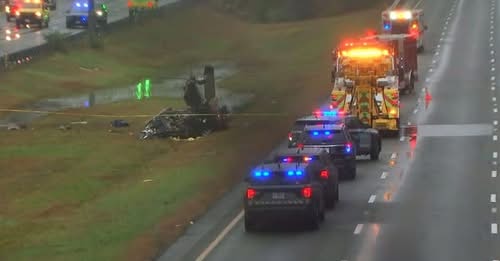Tragedy Strikes as Plane Crashes Amid Nor’easter
That’s a tragic and deeply unsettling event. The recent plane crash, which occurred during a severe nor’easter, has left communities, authorities, and aviation experts grappling with both shock and sorrow. Incidents like this are particularly devastating because they combine the unpredictability of extreme weather with the inherent risks of air travel, creating a complex and harrowing situation for all involved.
According to initial reports, the plane went down amid heavy winds, driving rain, and rapidly deteriorating visibility—conditions commonly associated with a nor’easter. Emergency responders arrived as quickly as possible, braving the severe weather to reach the crash site and provide aid. Despite their efforts, the severity of the crash and the challenging conditions have made rescue and recovery operations extremely difficult. Authorities are urging the public to remain patient as they work tirelessly to assess the scene, provide assistance where possible, and begin the painstaking process of investigating the cause.
The loss of life in incidents like these is always tragic, touching the hearts of families, friends, and communities. Every flight carries with it the hopes, dreams, and loved ones of its passengers and crew. When such a catastrophe occurs, the grief extends far beyond the immediate families, rippling through communities and drawing attention to the fragility of life and the forces of nature.
Weather-related aviation disasters also raise important questions about safety, preparedness, and response protocols. Experts note that nor’easters bring a combination of high winds, heavy precipitation, and often rapidly changing conditions, which can pose extreme challenges to pilots and air traffic control. Investigators will carefully examine flight records, weather data, and communication logs to determine how the storm may have influenced the circumstances of the crash and to identify any lessons that could help prevent future tragedies.
The human impact of such events cannot be overstated. Families of passengers and crew members are left waiting anxiously for information, often relying on media updates and official statements for news. Local communities are also affected, as emergency services and volunteers work tirelessly in conditions that are both physically demanding and emotionally taxing. Vigils, memorials, and community gatherings often arise in the wake of such disasters, reflecting both the shared grief and the collective support that emerges in times of crisis.
As investigations continue, authorities emphasize the need for careful analysis and adherence to safety protocols, while also balancing the urgent need to provide answers and closure for those affected. The combination of extreme weather and aviation factors presents a complex puzzle, but it also underscores the resilience and dedication of first responders, investigators, and the broader aviation community in seeking to understand and respond to such tragedies.
In the coming days, more information is expected to emerge, shedding light on the circumstances surrounding the crash. While the technical aspects of the investigation will be scrutinized closely, the focus on human impact remains central: remembering the lives lost, supporting those affected, and honoring the dedication of those working under extraordinary conditions to uncover the truth.
Ultimately, events like this remind us of the unpredictable nature of life and the power of nature itself. Communities, families, and authorities alike are left grappling with grief, questions, and the urgent need to ensure safety measures are continually reviewed and strengthened to prevent future tragedies.

Leave a Reply